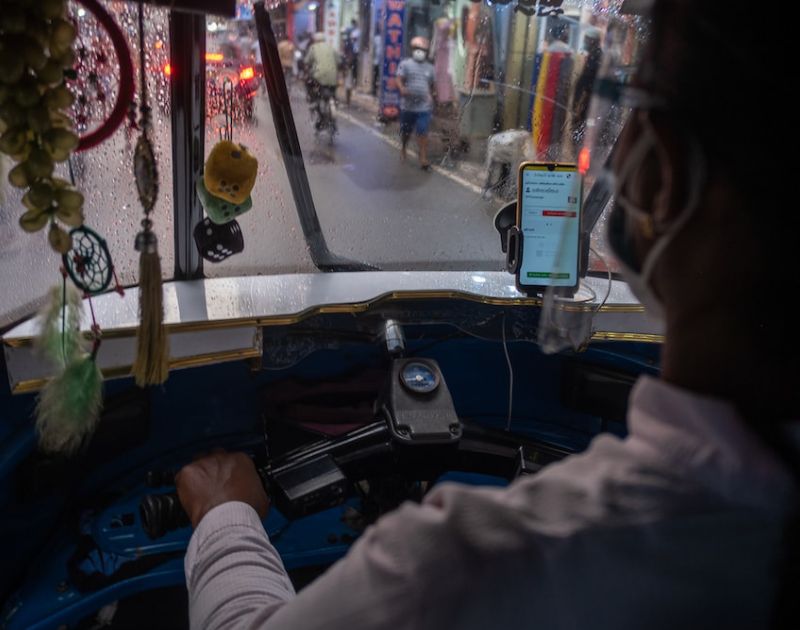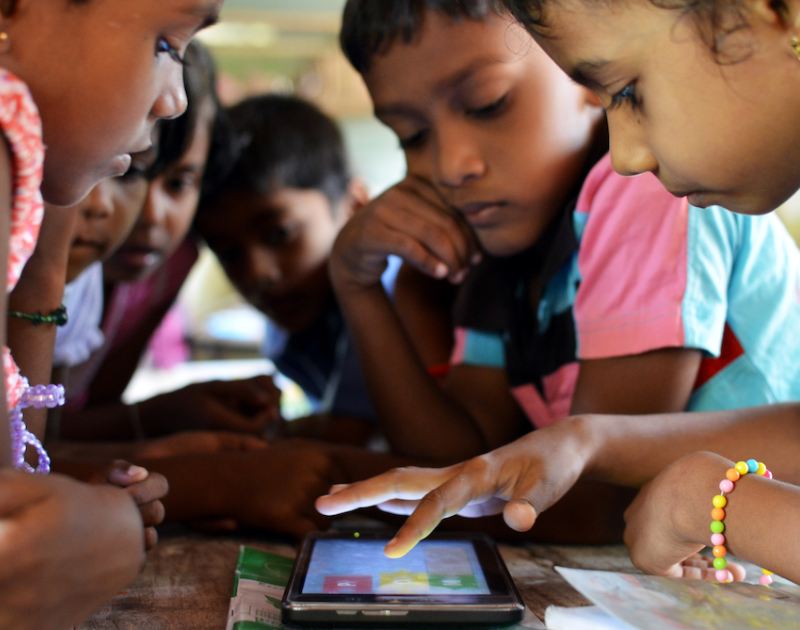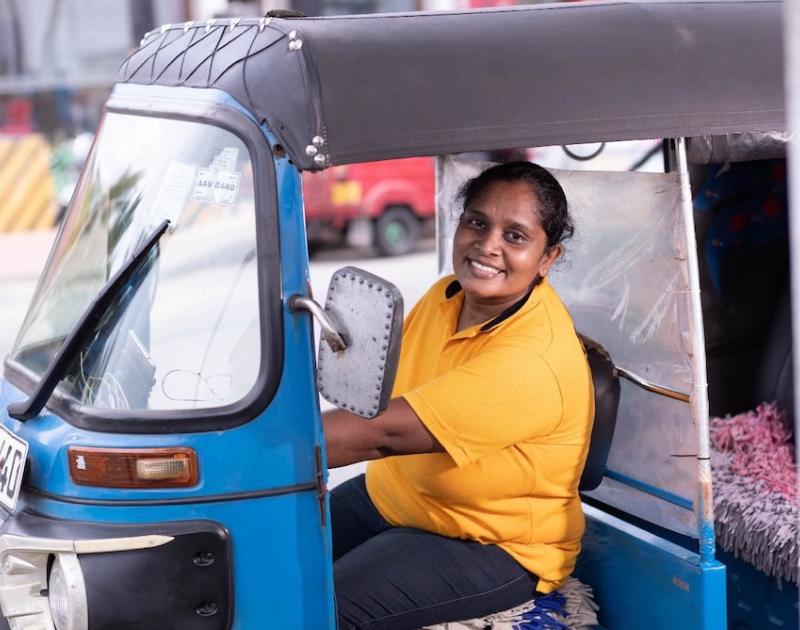
- Home
- Knowledge Insights
- Dissecting the Digital Focus in Sri Lanka’s National Education Policy Framework
In 2023, CSF was invited to provide inputs and comments to the proposed National Education Policy Framework 2023-2048, as a member of the Expert Committee and specifically as part of the ‘Core Group on ICT/ AI Integration’. A key focus of the new education framework was the role that digital transformation could play in enhancing the education system of the country, and this was a key area of focus in our inputs and comments during the process. This article shares our perspectives drawing from these inputs, specifically comments we shared, in response to the final draft circulated to working groups (dated September 1st 2023), and a previous draft (August 27th 2023). CSF’s submissions were anchored to one of our thematic areas of work: ‘Inclusive Technology and Innovation’, and so this article situates those inputs in the wider context of digital inclusion issues. Given the strong and ambitious focus on digital transformation in the new framework, our overarching observation was the need for a much greater emphasis on bridging the digital divide, without only considering the potential upside opportunities from greater digitisation of education. This is especially important considering that families may not already have access to affordable technology and infrastructure, both before the economic crisis, as well as exacerbated subsequent to it. But before we look at the Sri Lankan policy framework, firstly let’s explore at the global context.
Global focus on equity and inclusion in digital education
Globally, digital equity and digital inclusion has been given priority in education frameworks, fuelled predominantly by disparities highlighted during the COVID-19 pandemic. The UN Committee on the rights of the child, general comment no. 25 (2021) on Children’s Rights in Relation to the Digital Environment note the importance of the digital environment supporting, promoting and protecting safe and equitable engagement. Under this, the first General Principle focuses on Non-Discrimination, requiring that, ‘State partities ensure that all children have equal and effective access to the digital environment in ways that are meaningful for them’ and, ‘States parties should take all measures necessary to overcome digital exclusion’, with a focus on digital technologies in educational settings, communities and homes.
These sentiments are further amplified by the RewirEd Global Declaration on Connectivity for Education developed by UNESCO with the objective of ensuring that digital transformation of education is aligned to the 2030 Sustainable Development Agenda. It sets forth inclusion as a primary principle. Principle 1, ‘Centre the most marginalised’ suggests that connectivity and technology must be deployed to close educational divides, keeping those who are marginalised at the centre. It further highlights that digital tools too often benefit those who are privileged, with strategies to make tools more inclusive and accessible only emerging as a secondary focus – often widening educational inequity.
Keeping these in mind, an OECD working paper published in 2023, highlights the impact that digital technology can play in education, however stresses that without focus on equity and digital inclusion, technology can be a barrier to achieving wider and more inclusive education.
Sri Lankan context of digital gaps
In Sri Lanka, even prior to the pandemic – digital access and skills were a cause for concern. In a report published in 2019 by the International Labour Organisation (ILO), language and skill gaps in English literacy, digital literacy and soft skills were identified as challenges for workers pursuing skilled jobs and gains from technology. Further, in 2019, desktop or laptop ownership per household was only 22% nationally, with ownership as low as 4.6% in estate sectors.
Against this backdrop, it is no surprise that during the COVID-19 pandemic in 2020, many children lost access to education when internet-based or remote learning was introduced, as they did not have the tools needed to access it. Research conducted by Colombo Urban Lab revealed that children of working class poor families in Colombo struggled to access online education due to lack of access to smartphones and data, at times where parents were unable to earn a daily wage due to lockdowns. A nationally representative survey conducted by LirneAsia in 2021 highlighted that out of the students enrolled in primary and secondary school, only 63% had access to online learning during the pandemic.
Wijesinha (2022) also highlights pre-existing regional and gender disparities in digital literacy, device ownership, and technology usage, and observed that pandemic-induced income disruptions may have influenced a drop in mobile subscriptions. The recent economic crisis and currency depreciation has also raised prices of devices sharply, making smartphones less affordable.
In a roundtable interview hosted by CSF, renowned education expert Dr Tara de Mel expressed similar sentiments, noting that even prior to the pandemic Sri Lanka was far behind comparable countries in several digital education-related indices. She also flagged the acute learning losses that have arisen from COVID-19 school shutdowns, and cautioned against presumptions about digital learning being able to address learning losses. Dr. de Mel did note that technology can play a role in widening access to education, if investments are made in ensuring inclusive access to digital learning – affordable good quality devices, data packages, and teachers trained in delivering remote education.
Even today, nearly four years after the pandemic, digital access and connectivity required to effectively facilitate remote learning is still low. A survey of 25,042 households conducted by UNDP between 2022-2023 revealed that only 42.6% of surveyed households have access to a smartphone with 43.5% of households relying on mobile data cards for internet access. Only 8.9% of surveyed households had access to home broadband. The most recent statistics available on computer literacy and digital literacy (2021), highlight that computer literacy and digital literacy are at 34.3% and 57.2%, respectively – with desktop or laptop ownership per household being as low as 4.1% in estate areas and 20.7% in rural areas.
Reflections on the Policy Framework
Whilst the draft framework acknowledged the presence of the digital divide in general education (primary and secondary) as a key constraint (page 8), there was little reference made to bridging these gaps in the rest of the framework. Investments in infrastructure, connectivity and devices are only mentioned once, under financing and not thereafter. Similarly, whilst ‘democratising access to education’ is identified as a key policy objective (page 6), irrespective of race, ethnicity, religion, class, caste, nationality and disability – digital is not. We strongly felt that digital is a key factor that should be included, given that existing digital divides hinder democratic access to education. It is only once we acknowledge this, that key steps can be taken to remediate it.
Overall, we recommended that the focus on digital inclusion should be more explicit and a near-term goal, with progress aimed for within the next 2-3 years, coupled with a broader mandate to ensure digital equality in the 2048 agenda. The importance of prioritising bridging the digital divide and ensuring digital equity was repeatedly emphasised by us, given the impact of the digital divide on education during COVID-19. It is expected that this would have since been exacerbated by the economic crisis, impacts on household incomes due to rising cost of living and higher taxes on telecoms and digital devices.
Another aspect we focussed on was digital literacy. Digital literacy is mentioned as a key constraint in general education – ‘limited exposure to future-centric curriculums that integrate concepts like AI, digital literacy, data science, and associated ethical considerations’ (page 9). Whilst the focus here is on weaknesses in existing curricula with reference to digital literacy amongst others, there is no mention of digital literacy or its importance in education, anywhere in the document. Given the ambitions of the framework, and also given that a key area of focus on the National Digital Strategy 2030 is on ‘Digital Industry, Skills and Jobs’, digital literacy should be given more prominence in this framework. Countries such as Indonesia and Nigeria have developed National Digital Literacy Frameworks to help drive targeted action in closing the digital skill gap. More recently in November 2023, Malaysia launched a Digital Education Policy to foster digital literacy and skills amongst students. The prominence given to improving digital literacy in comparable countries is one that Sri Lanka should draw inspiration from, perhaps with a move to build a national framework to address this or to include it more meaningfully in the existing framework.
Along these lines, we also provided comments around creating ecosystems that promote long-term digital learning. The creation of any centres or facilities which the framework envisages doing in partnership with state and non-state institutions(page 16) should be accompanied with a strategy of making the facility future-proof, and sustainable over a long period of time. This is especially relevant for any digital centres or hubs that may be created. This includes the creation of maintenance funds for software and hardware updates, infrastructure improvements, maintenance, repair and security, and similar aspects that ensure sustainability and long-term use, avoiding having centres that quickly become obsolete with new waves of technology.
Similarly, we commented that a supporting ecosystem should be created for those who engage in digital remote learning, for instance facilitating affordable access to repairs of devices and access to tech support lines for those in areas with much less technology support services. In some instances, where there is low coverage of technology, infrastructure and connectivity, measures should be taken to provide offline learning materials and enable one-to-one question and answer sessions, to ensure that any shortfalls in digital access don’t hamper digital learning.
We also made additional comments that there needs to be a focus on parental-controls on devices being used by children, to ensure a safe learning environment. Whilst the framework mentions that the school curriculum and teacher development curriculum will ‘follow guidelines and regulations on ethical use of data and technology tools such as artificial intelligence, privacy, security, fairness, accountability and transparency issued in data use’ (page 13 and page 16 respectively) , there was no mention of how device security and data security will actually be implemented to ensure the safety of children. Given the high and growing rate of cyber-crime, and cyber abuse, it is important that safety and security become key considerations to keep children safe online.
Concluding thoughts
Sri Lanka’s multiple and overlapping crises since the Easter Sunday bombings in 2019 have impacted digital inclusion, exacerbating pre-existing inequalities, and in turn impacting the prospects for inclusive digital education. These cannot be ignored when crafting national education policy frameworks where ‘digital’ features so prominently, and must be dealt with in a considered and coherent manner.
Whilst ‘digital’ – and related terms and ideas – are mentioned throughout the National Education Policy Framework in different ways, we felt that at times they lacked clear intent. In the creation of such frameworks, it is imperative that words like ‘digital’ and ‘AI’ do not simply become buzzwords that are loosely included, but rather are linked to tangible objectives and outcomes. Digital inclusion needs to be a key focus in the short-term with a renewed understanding of the magnitude of the problems of digital inequity, and strong intent to make transforming it a priority, with practical measures accompanying it. Otherwise the idea of greater digital education – as envisaged in the Framework – will remain just a prospect, without achieving the expected potential.
(Anisha Gooneratne is a Research Associate at the Centre for a Smart Future, and Anushka Wijesinha is Co-founder/Director. CSF was represented on the Expert Committee to review the NEPF, and worked specifically in the ICT/AI Integration Core Group)
References
Centre for a Smart Future, dir. 2022. Crisis in Sri Lanka’s Education Sector and the Way Forward – Roundtable with Dr Tara de Mel. Colombo, Sri Lanka. https://www.youtube.com/watch?v=nRT6dgYqQxs.
Department of Census and Statistics. 2021. ‘Computer Literacy Statistics 2021’. Sri Lanka: Ministry of Finance, Economic Stabilization and National Policies. http://www.statistics.gov.lk/Resource/en/ComputerLiteracy/Bulletins/AnnualBuletinComputerLiteracy-2021.pdf.
digWatch. 2023. ‘Malaysia Launches Digital Education Policy to Foster Digital Literacy in Students’, 28 November 2023. https://dig.watch/updates/malaysia-launches-digital-education-policy-to-foster-digital-literacy-in-students#:~:text=28%20Nov%202023-,Malaysia%20launches%20Digital%20Education%20Policy%20to%20foster%20digital%20literacy%20in,generation%20adept%20in%20digital%20literacy.
Gayani Hurulle. 2022. ‘Education during COVID-19 Induced School Closures’. LirneAsia (blog). 28 March 2022. https://lirneasia.net/2022/03/who-had-access-to-online-education-during-school-closures/.
Gottschalk, F, and C Weise. 2023. ‘Digital Equity and Inclusion in Education: An Overview of Practice and Policy in OECD Countries’. OECD Education Working Papers 299. Vol. 299. OECD Education Working Papers. https://doi.org/10.1787/7cb15030-en.
ICTA. 2019. ‘National IT BPM Workforce Survey 2019’. https://drive.google.com/file/d/1IAGBE6Ko6zLI9EebVkZzi-fAklYdokJE/view.
———. 2023. ‘National Digital Strategy 2030’. https://www.icta.lk/icta-assets/uploads/2023/05/Annex-1-National-Digital-Strategy-2030.pdf.
ILO. 2019. Future of Work in Sri Lanka: Shaping Technology Transitions for a Brighter Future. Colombo, Sri Lanka: ILO Country Office for Sri Lanka and the Maldives. https://www.ilo.org/wcmsp5/groups/public/—asia/—ro-bangkok/—ilo-colombo/documents/meetingdocument/wcms_677979.pdf.
National Information Technology Development Agency. 2023. ‘National Digital Literacry Framework’. Nigeria. https://nitda.gov.ng/wp-content/uploads/2023/07/Digital-Literacy-Framework.pdf.
OHCHR. 2021. ‘General Comment No. 25 (2021) on Children’s Rights in Relation to the Digital Environment’. https://www.ohchr.org/en/documents/general-comments-and-recommendations/general-comment-no-25-2021-childrens-rights-relation.
UNDP. 2023. ‘National Citizen Survey Sri Lanka Dashboard – January 2023’. https://www.undp.org/srilanka/mvi.
UNESCO. 2022. ‘The RewirEd Global Declaration on Connectivity for Education: #ConnectivityDeclaration’. 0000381482. Paris, France: UNESCO. https://unesdoc.unesco.org/ark:/48223/pf0000381482.locale=en.
UNESCO – UNEVOC. 2021. ‘Digital Competence Frameworks for Teachers, Learners and Citizens- Indonesian National Digital Literacy Framework’. https://unevoc.unesco.org/home/Digital+Competence+Frameworks/lang=en/id=19#:~:text=The%20framework%20is%20part%20of,hoaxes%2C%20cyberbullying%20and%20online%20radicalism.
Wijesinha, Anushka. 2022. ‘Making Sri Lanka’s Technology Transition More Inclusive’. 2022. https://www.csf-asia.org/making-sri-lankas-technology-transition-more-inclusive/#email-link.


